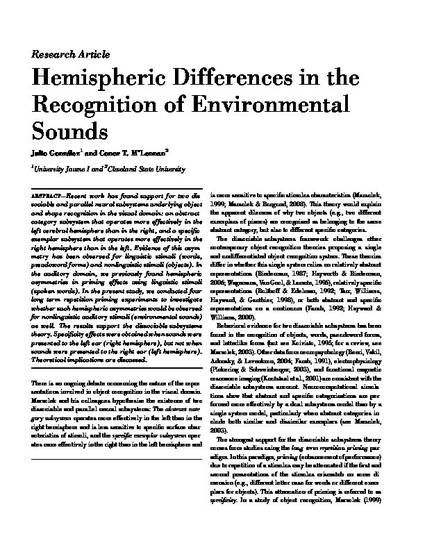
In the visual domain, Marsolek and colleagues have found support for two dissociable and parallel neural subsystems underlying object and shape recognition: an abstract category subsystem that operates more effectively in the left cerebral hemisphere (LH), and a specific-exemplar subsystem that operates more effectively in the right cerebral hemisphere (RH). Evidence of this asymmetry has been observed for linguistic (words, pseudo-word forms) and non-linguistic (objects) stimuli. In the auditory domain, the authors previously found hemispheric asymmetries in priming effects when linguistic stimuli (spoken words) were used. In the present study, hemispheric asymmetries were investigated for non-linguistic stimuli (environmental sounds) by means of four long-term repetition-priming experiments. The results support the dissociable-subsystems theory, showing specificity effects when sounds were presented to the left ear (RH), but not when presented to the right ear (LH). Theoretical implications are discussed.
